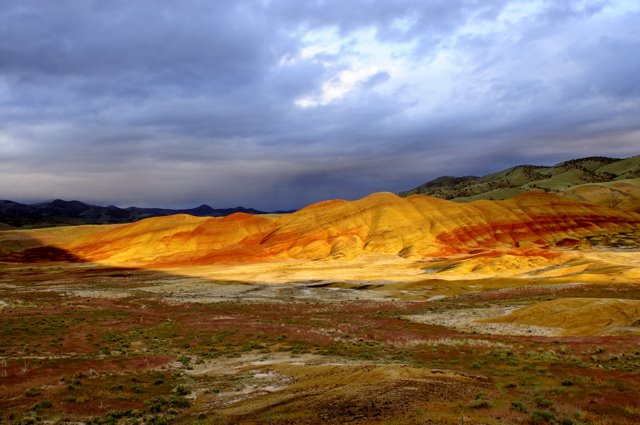Every scene I attempt to capture with my camera has an impact on me. Every now and then one comes along that has a greater impact than others and I have just added one of these to my website and photo store.
I created this image using a feature in my camera that allows me to overlay two images to create a new image of both. You can do this with good film cameras too by exposing your film at different subjects without advancing the frame but you need experience and skill to do this well. You also need a camera that allows this kind of photography. Not all of them do this as they are designed to prevent us from ruining a previous exposure with a new one.
I used my Nikon D300 to create this image and when reviewed this scene on my computer later, I found that I did not want to edit it further. I didn't even crop it to a standard size. I decided to totally leave this image alone. You can find it in a new gallery called "Thoughts" at Dwains Picks
Sunday, September 6, 2009
Subscribe to:
Post Comments (Atom)
Photography Tips
Here are a few things you can do to improve your photography that will apply regardless of what camera you use. These are the basics that every photographer should know and do to get reasonably good pictures out of any camera.
Make sure you have a clean lens. Don't just blow the dust off, but use a clean cloth suitable for cleaning lenses and do it right.
Set up so your camera is stable and won't move as you press the shutter. You can do this a number of ways. If you will be handholding the camera, hold your elbows in against your sides, and stand with your feet apart with one slightly forward of the other. You can also lean against a solid object like a light pole, tree, building or whatever. The best method though is to use a tripod or monopod. I have both but I like to carry the tripod best. If I want to use it as a monopod I just extend only one leg and us it as I would a monopod. I'll add instructions about to how to use these tools later.
Finally the "First" basic thing you need to do is read your manual and learn what all the parts of your camera are for and how to use them. If you understand how your meter works and what white balence is you'll go a long way to getting that shot you want when the light is wierd and you are wondering why your pictures are all dark or yellow instead of like what you saw on the monitor or in the viewfinder.
I'll expand on all these topics in the coming weeks and months so you'll want to check back and see what I've added from time to time.
Make sure you have a clean lens. Don't just blow the dust off, but use a clean cloth suitable for cleaning lenses and do it right.
Set up so your camera is stable and won't move as you press the shutter. You can do this a number of ways. If you will be handholding the camera, hold your elbows in against your sides, and stand with your feet apart with one slightly forward of the other. You can also lean against a solid object like a light pole, tree, building or whatever. The best method though is to use a tripod or monopod. I have both but I like to carry the tripod best. If I want to use it as a monopod I just extend only one leg and us it as I would a monopod. I'll add instructions about to how to use these tools later.
Finally the "First" basic thing you need to do is read your manual and learn what all the parts of your camera are for and how to use them. If you understand how your meter works and what white balence is you'll go a long way to getting that shot you want when the light is wierd and you are wondering why your pictures are all dark or yellow instead of like what you saw on the monitor or in the viewfinder.
I'll expand on all these topics in the coming weeks and months so you'll want to check back and see what I've added from time to time.

No comments:
Post a Comment